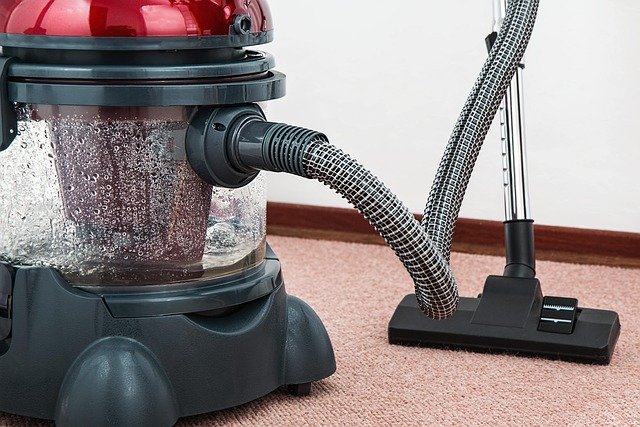Effective Solutions for Eliminating Odors in Your Home
Unpleasant odors can significantly impact the comfort and livability of your home. Whether it's from pets, cooking, or other sources, finding effective ways to eliminate these odors is crucial for maintaining a fresh and inviting living space. This article explores various methods and products designed to combat household odors, including odor eliminators, air fresheners, and air purifiers. We'll delve into how these solutions work and provide insights on choosing the right options for your specific needs.

-
Smoking residue on fabrics and surfaces
-
Garbage and food waste
-
Dirty laundry and shoes
These odors can become trapped in carpets, upholstery, and other porous materials, making them difficult to remove without proper treatment. Identifying the source of the odor is crucial for selecting the most effective elimination method.
How do odor eliminators work?
Odor eliminators are specially designed products that neutralize or remove unpleasant smells rather than simply masking them. They work through various mechanisms:
-
Chemical neutralization: Some odor eliminators contain compounds that react with odor-causing molecules, changing their structure and rendering them odorless.
-
Adsorption: Certain products use materials like activated charcoal or zeolite that trap odor molecules within their porous structure.
-
Enzymatic action: Biological odor eliminators contain enzymes that break down organic matter responsible for odors, such as pet urine or food residues.
-
Oxidation: Some eliminators use oxidizing agents to break down odor-causing compounds through chemical reactions.
When choosing an odor eliminator, consider the specific type of odor you’re dealing with and the surface or area affected. Different products may be more effective for certain odors or applications.
Are air fresheners effective for long-term odor control?
While air fresheners can provide immediate relief from unpleasant odors, they are generally not considered a long-term solution for odor control. Here’s why:
-
Masking vs. eliminating: Most air fresheners simply mask odors with stronger, more pleasant scents rather than eliminating the source.
-
Temporary effects: The effects of air fresheners are often short-lived, requiring frequent reapplication.
-
Potential health concerns: Some air fresheners contain volatile organic compounds (VOCs) that may cause respiratory irritation or other health issues with prolonged exposure.
-
Environmental impact: Aerosol air fresheners can contribute to air pollution and may contain propellants harmful to the ozone layer.
While air fresheners can be useful for quick odor management, they should be used in conjunction with more effective, long-term odor elimination methods for best results.
How can air purifiers contribute to odor elimination?
Air purifiers can play a significant role in eliminating odors and improving overall indoor air quality. Here’s how they work:
-
Filtration: High-efficiency particulate air (HEPA) filters can remove airborne particles that carry odors, such as pet dander, dust, and pollen.
-
Activated carbon: Many air purifiers include activated carbon filters, which are excellent at adsorbing odor-causing molecules and gases.
-
UV-C light: Some models use ultraviolet light to kill odor-causing bacteria and mold spores.
-
Ionization: Certain air purifiers release negative ions that attach to airborne particles, making them too heavy to remain suspended in the air.
When selecting an air purifier for odor control, look for models with both HEPA and activated carbon filters for the most comprehensive odor and particle removal.
What are the most effective cleaning methods for odor removal?
In addition to using specialized products, proper cleaning techniques can significantly contribute to odor elimination:
-
Regular vacuuming: Use a vacuum with a HEPA filter to remove odor-causing particles from carpets and upholstery.
-
Steam cleaning: Deep clean carpets and upholstery with a steam cleaner to remove embedded odors.
-
Baking soda treatments: Sprinkle baking soda on carpets, let it sit overnight, and vacuum to absorb odors.
-
Vinegar solutions: Use a mixture of water and white vinegar to clean hard surfaces and neutralize odors.
-
Essential oils: Add a few drops of essential oils to your cleaning solutions for a natural, pleasant scent.
-
Proper ventilation: Open windows and use fans to improve air circulation and remove stale odors.
Combining these cleaning methods with odor eliminators and air purifiers can create a comprehensive approach to maintaining a fresh-smelling home.
Comparison of Odor Elimination Products
| Product Type | Effectiveness | Best For | Considerations |
|---|---|---|---|
| Chemical Odor Eliminators | High | Tough, persistent odors | May contain harsh chemicals |
| Natural Odor Absorbers | Moderate | Ongoing, mild odors | Environmentally friendly, may need frequent replacement |
| Enzymatic Cleaners | High | Organic odors (e.g., pet urine) | Requires time to work effectively |
| Air Purifiers with HEPA and Carbon Filters | High | Airborne odors and particles | Initial cost, ongoing filter replacement |
| Ozone Generators | Very High | Severe odor situations | Should only be used in unoccupied spaces |
Prices, rates, or cost estimates mentioned in this article are based on the latest available information but may change over time. Independent research is advised before making financial decisions.
In conclusion, effectively eliminating odors in your home requires a multi-faceted approach. By understanding the sources of odors, using appropriate odor eliminators, maintaining good cleaning practices, and employing air purification methods, you can create a fresh and inviting living environment. Remember that consistent effort and a combination of methods often yield the best results in long-term odor control.






